Uzi Does It
Belgian Cops Tasked With Guarding NATO Headquarters Still Wield The Iconic Uzi Submachine Gun
Though unquestionably iconic, the original Israeli Uzi submachine gun is an increasingly uncommon sight among Western security forces. However, recently released pictures show that Belgian Federal Police tasked with guarding NATO’s main operational headquarters in Brussels still have access to these guns.
The U.S. military released the images of the Belgian Federal Police personnel training with their Uzis at an indoor range at the Training Support Center at Chièvres Air Base. Chièvres is situated around 12 miles from NATO’s Supreme Headquarters Allied Powers Europe (SHAPE), home of the Alliance’s Allied Command Operations (ACO), in the city of Mons.
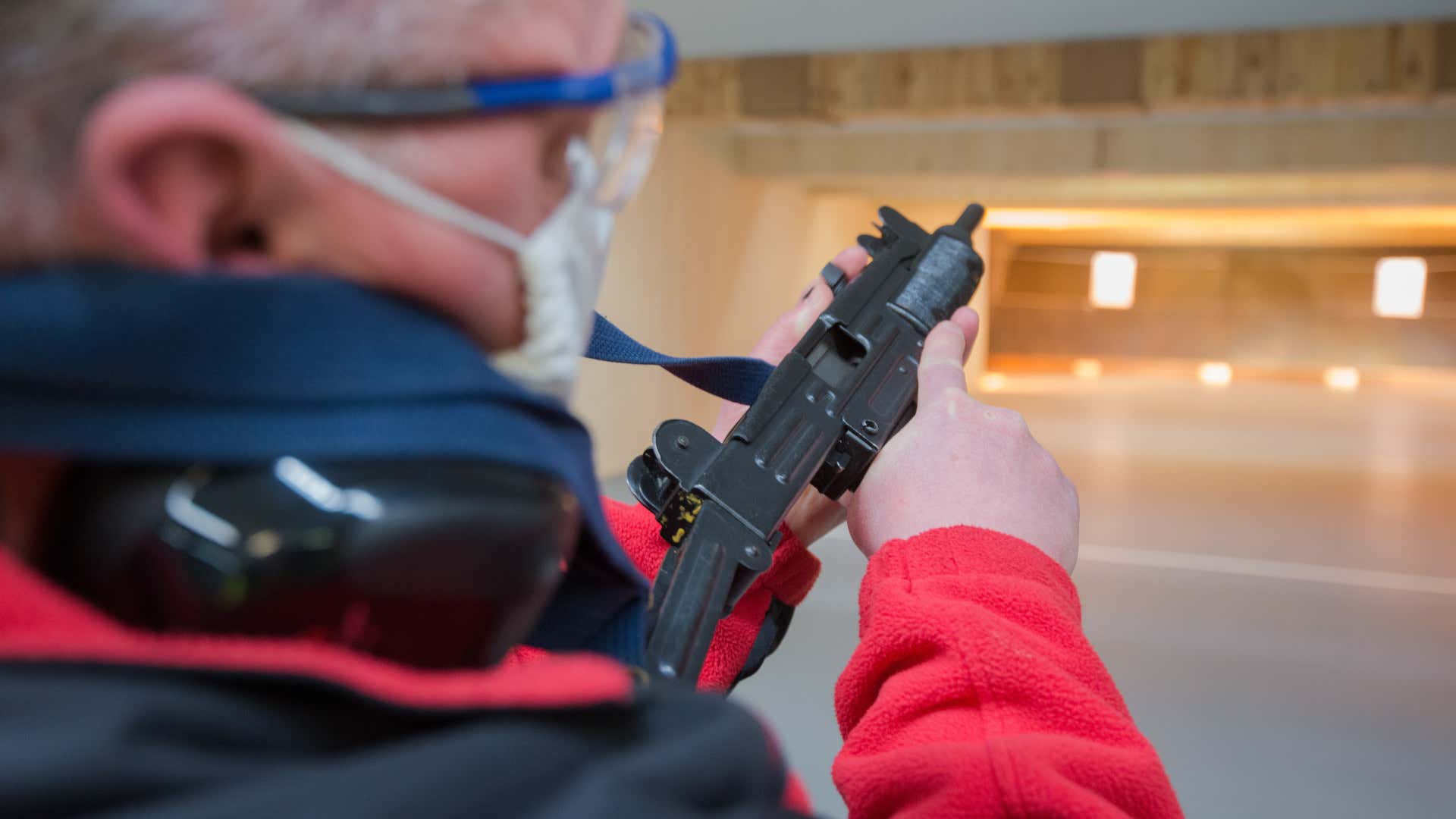
A Belgian Federal Police officer cocks their Uzi submachine gun while training at an indoor range at Chièvres Air Base.
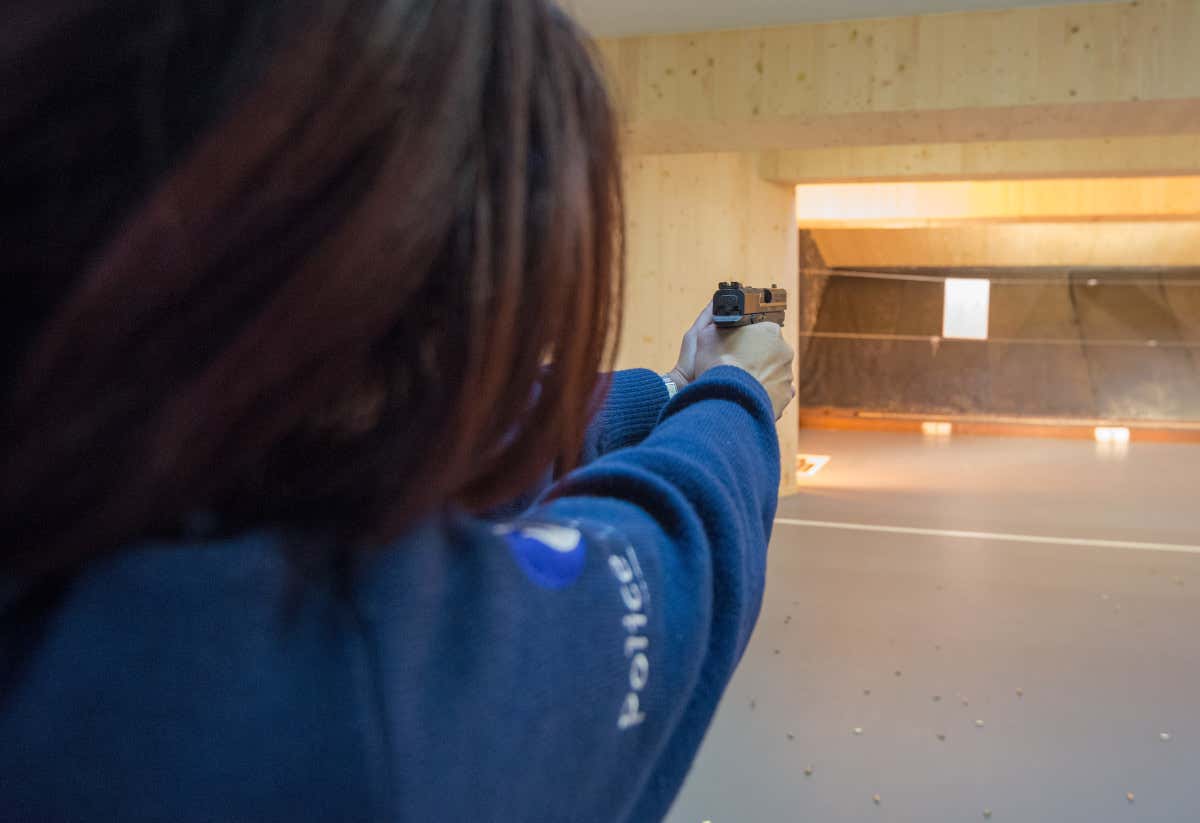
A Belgian Federal Police officer aims their Smith & Wesson M&P9 pistol.
The full-size Uzis are definitely the more eye-catching weapons. These particular examples are guns that were license-built in Belgium by the equally famous small arms company Fabrique National, more commonly referred to simply as FN.
Doing this allows for a more compact weapon that still has a relatively long barrel. The original standard Uzi, which had a fixed wooden stock, had a barrel just over 10 inches long and an overall length of just over 25-and-a-half inches. By comparison, the M1 Thompson submachine gun, another iconic weapon, has a 10-and-a-half-inch-long barrel, but is nearly 32 inches long.
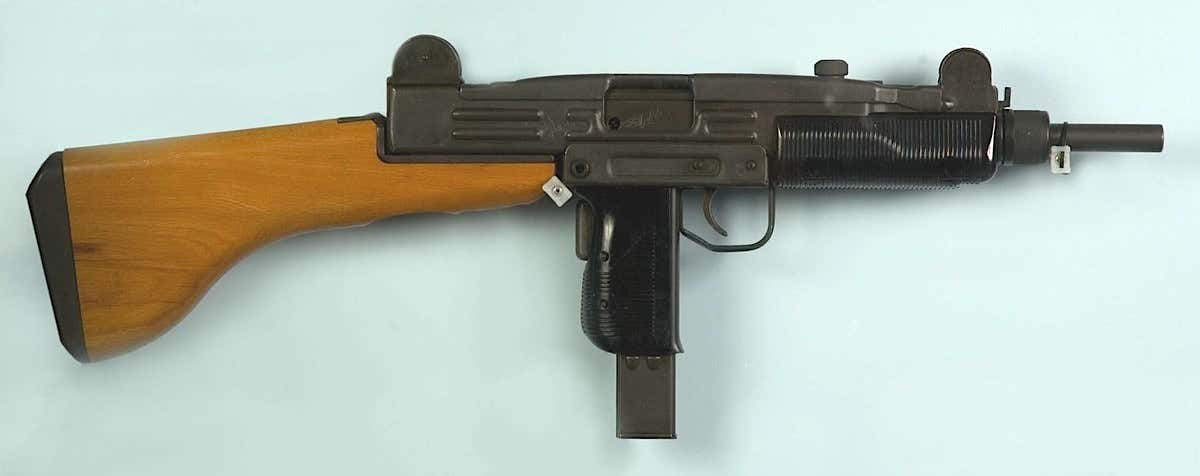
A standard Uzi submachine gun with a fixed wooden stock.
A version of the standard Uzi with a folding stock, as seen on the Belgian examples at Chièvres, was subsequently introduced. With this stock extended, the gun’s overall length is just slightly shorter than it would be with the fixed wood stock installed.
Despite the political complexities many countries faced, and that many still do, in dealing with Israel, the Uzi quickly became a gold standard for submachine guns worldwide. Iran under the Shah was among the importers of these guns and they remain in use in the current Islamic Republic, even though it is opposed to the very existence of Israel as a matter of policy. Large quantities of licensed copies and unlicensed clones were produced in various countries.
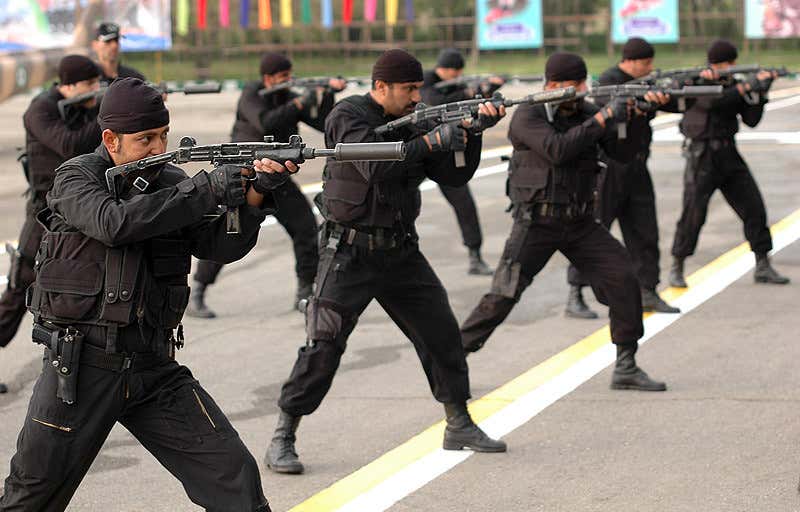
Iranian special forces personnel armed with Uzis with sound suppressors.
Through its ubiquity, including with major military and other security forces, the gun achieved iconic status, both in real life and in popular media. Robert Wanko, as well as other U.S. Secret Service agents, famously drew his Uzi during the attempted assassination of President Ronald Reagan in 1981.
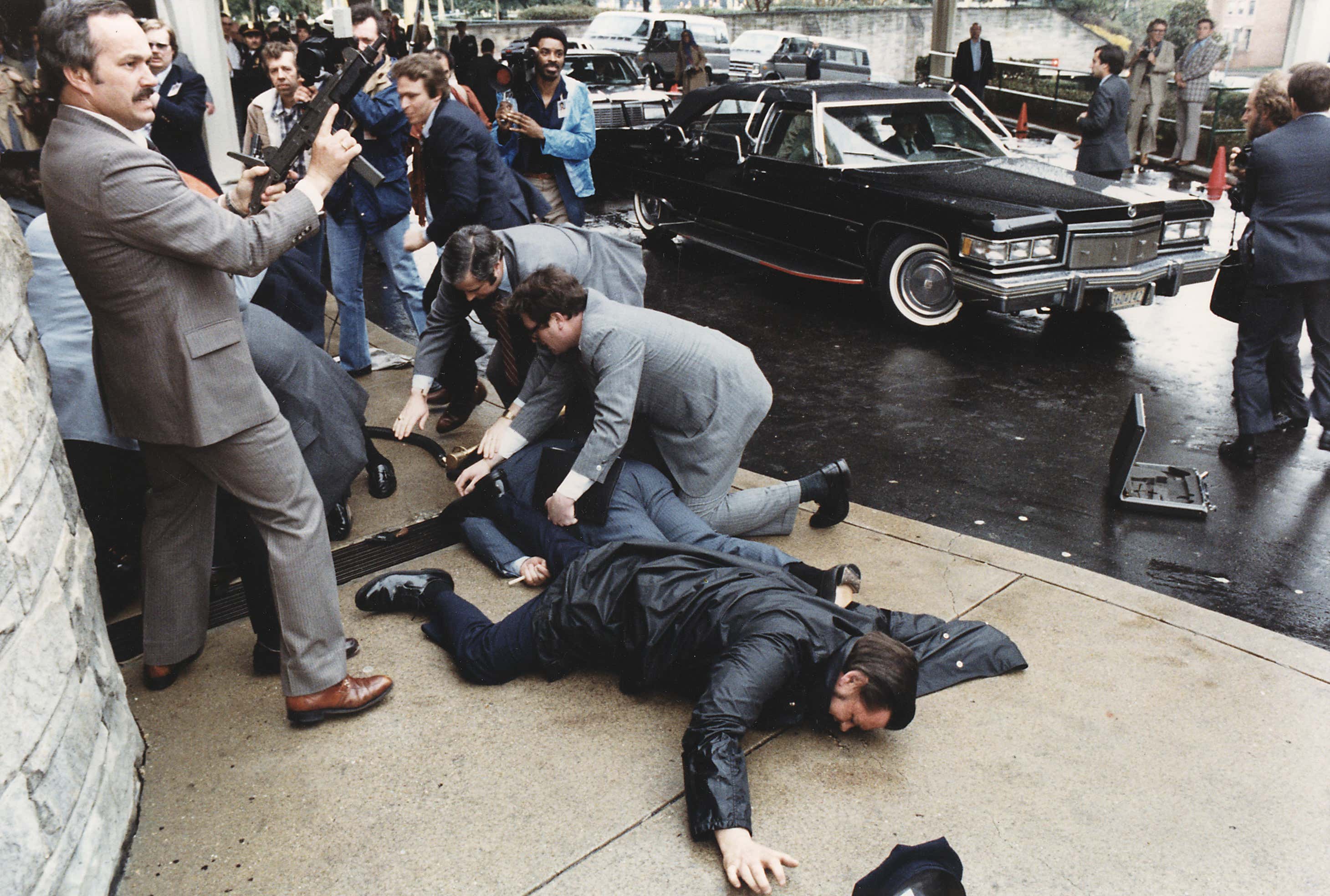
US Secret Service agent Robert Wanko, at left, unfolds the stock on his Uzi submachine gun in the immediate aftermath of the attempted assassination of President Ronald Reagan in 1981. A briefcase, in which an Uzi, either the one held by Wanko, or one wielded by another agent somewhere else at the scene, had been concealed, is seen in the street to the right.
Uzis also saw use with U.S. military special operations forces, including U.S. Navy SEAL teams and the U.S. Army’s Special Forces, and they remain in arms lockers within the American special operations forces community for foreign weapon familiarization training. Other federal government agencies, such as the State Department’s Diplomatic Security Service and predecessor organizations, issued Uzis to their personnel, as well.
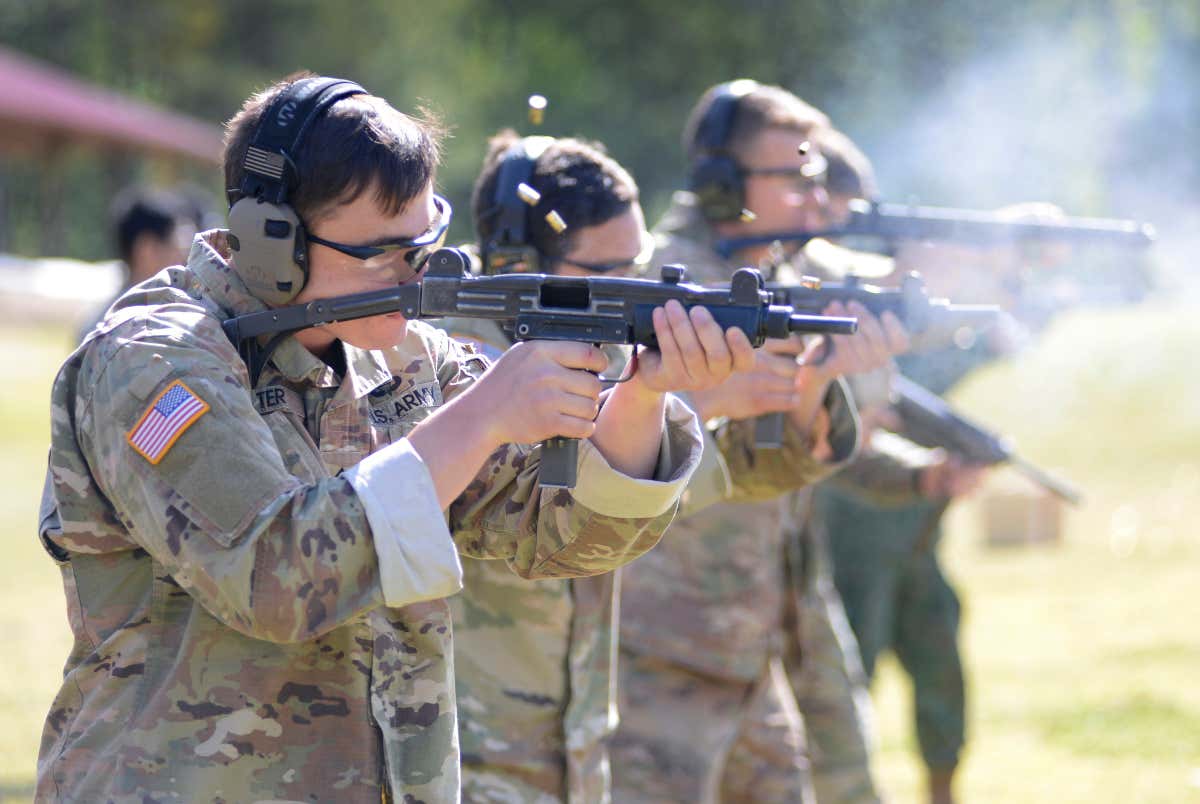
Students assigned to the Army’s JFK Special Warfare Center and School fire Uzis, as well as other submachine guns, during a foreign weapons familiarization training course.
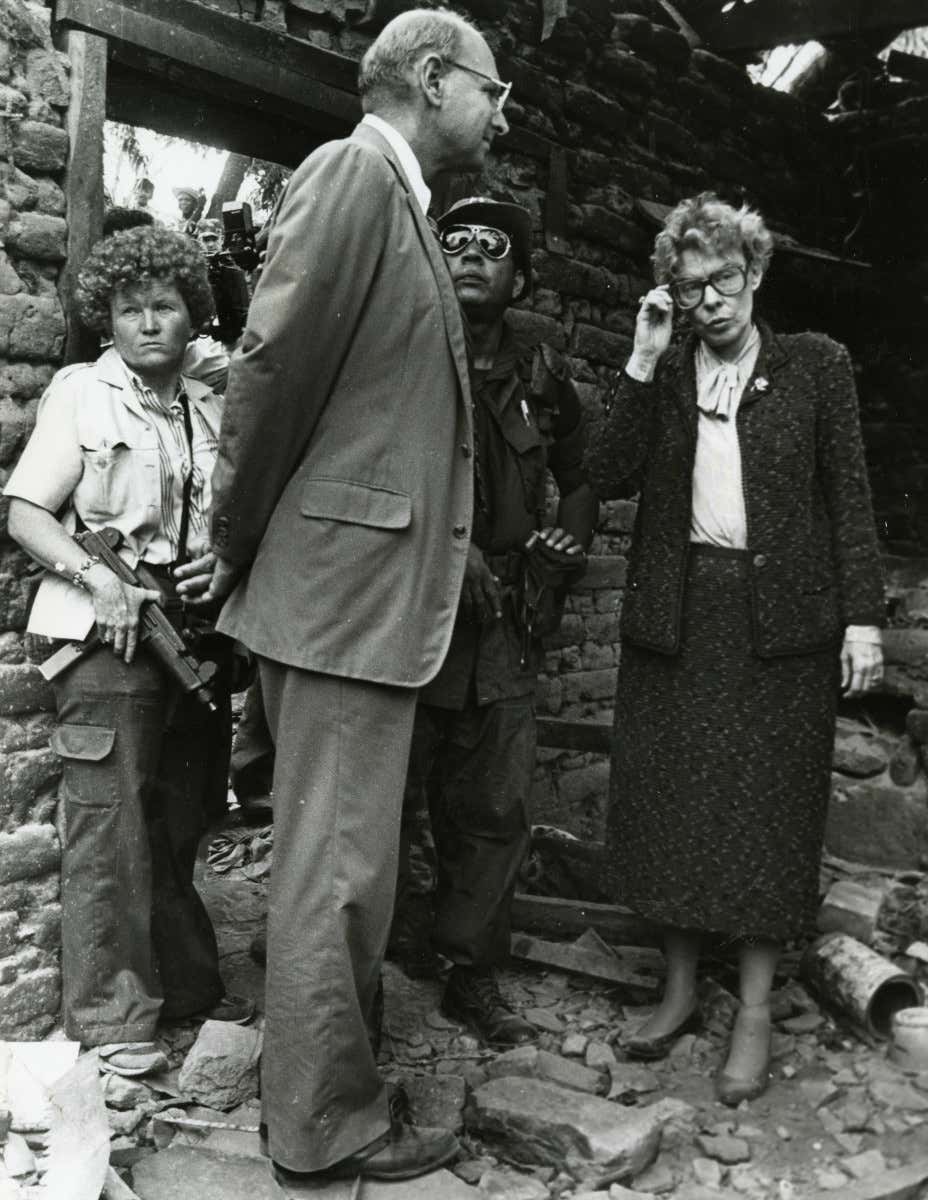
A special agent from what was then the US State Department’s Office of Security, armed with an Uzi, is seen at left in this picture of then-US Ambassador to El Salvador Thomas Pickering, in the foreground, and then-US Ambassador to the United Nations Jeane Kirkpatrick, at right, in El Salvador in 1984.
At the same time, Uzis also became popular with terrorist groups and criminals. The robust and compact design combined with the sheer number of these guns in circulation worldwide – Israel alone manufactured more than 1.5 million of them – increases the chances that they will continue to find their way into the hands of malign, non-state actors.
This was all quickly translated to the big screen in movies such as 1986’s The Delta Force, starring Chuck Norris and Lee Marvin. The list of movies, as well as television shows, in which the Uzi is a prominent feature, including other big-name blockbusters, such as 1984’s The Terminator, with Arnold Schwarzenegger as the titular Terminator, is far too long to post here in full. Videos games and other popular media also routinely feature Uzis.
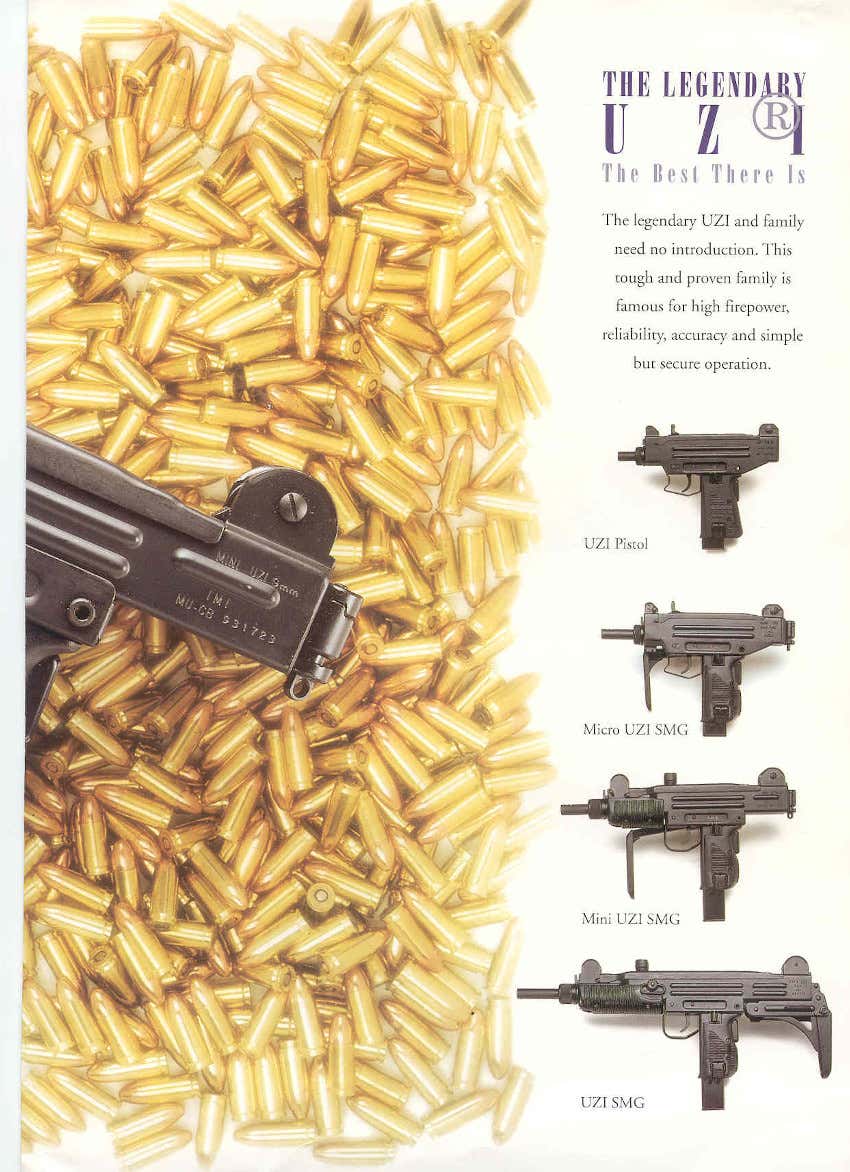
A 1980s-era advertisement showing all the models in the Uzi family at that time.
“Old technology has to be phased out at some point,” Iddo Gal, son Uzi Gal, told The Baltimore Sun in 2004, two years after his father died at the age of 79. “There are very few weapons that held on for so long.”
Still, just like its operational use, production of the Uzi persists. In 2010, Israeli gunmaker IWI even unveiled a new type, the Uzi Pro, a derivative of the Mirco Uzi featuring an all-new lightweight polymer lower receiver, among other changes, and various modern trimmings, such as accessory rails for mounting things like optical sights, lasers, and tactical lights. A semi-automatic “pistol” version, initially with no stock, but now available with an arm brace, was also introduced, again aimed primarily at civilian markets, particularly gun enthusiasts in the United States.
A newer class of guns, known as Personal Defense Weapons or PDWs, tries to make the best of both worlds by offering a compact and highly controllable package with a deep magazine depth that fires what can be described as miniature rifle rounds that are capable of penetrating body armor. These offerings have also degraded the sub-gun’s attractiveness in some instances.
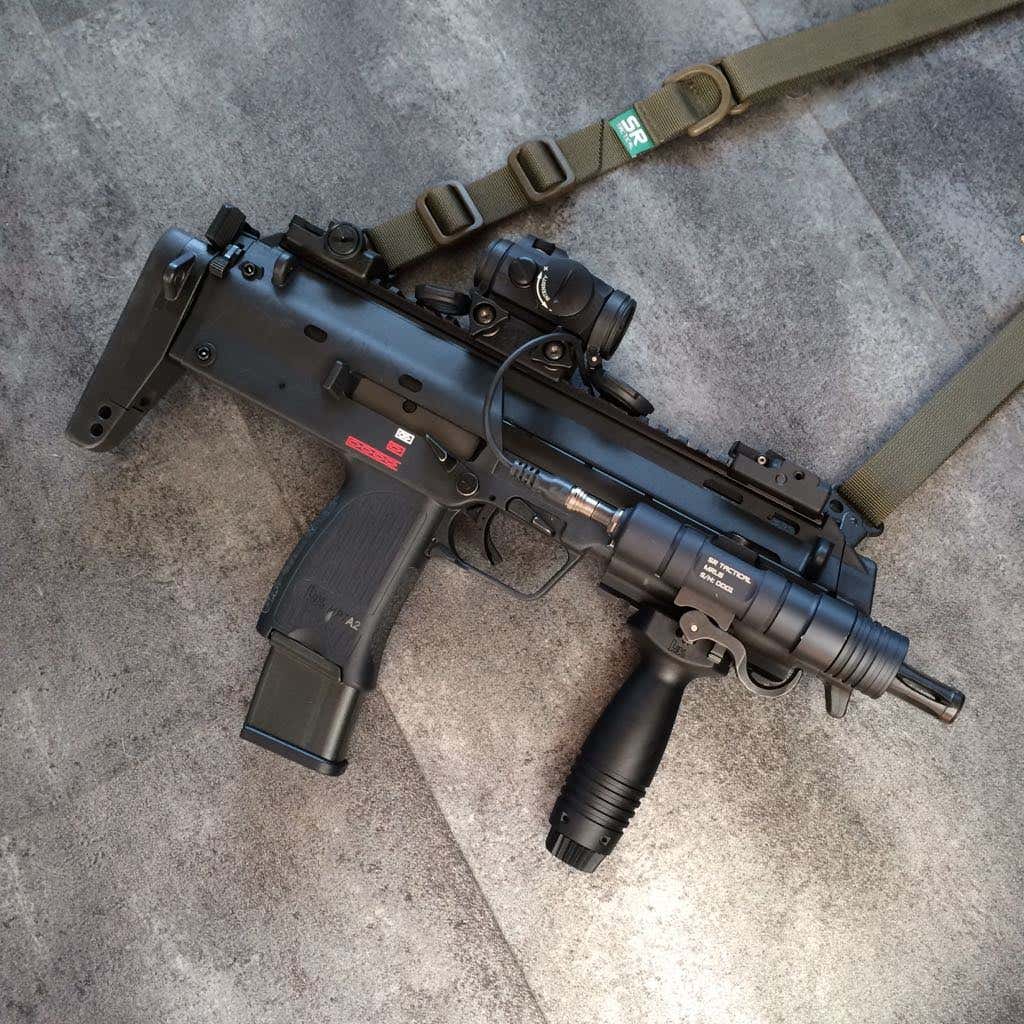
The HK MP7 is a highly popular PDW used by military and police forces around the globe.
That being said, submachine guns, in general, do continue to see service with major military and other security forces, though often in niche roles. For example, in 2019, the U.S. Army officially selected a version of the B&T USA AC9 PRO series as a new weapon specifically for VIP security details, something you can read about in more detail in this past War Zone piece.
How long the Belgian Federal Police will ultimately hang on to their Uzis remains to be seen, but, at least for now, they remain part of the arsenal available to officers protecting one of the key headquarters of what is arguably the most significant military alliance on the planet.

